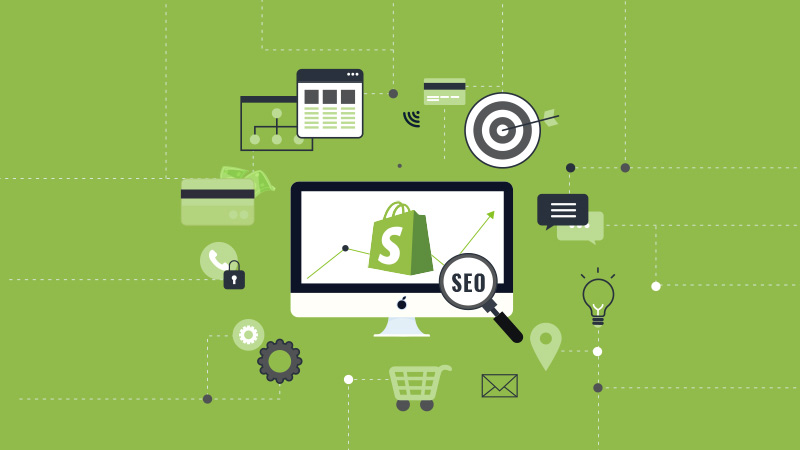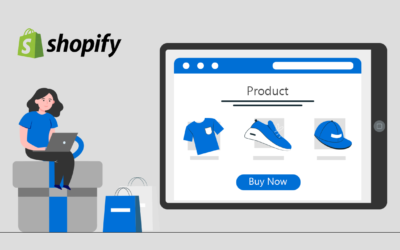
The attention span of internet users has become shorter than ever. According to recent stats, the average attention span of internet users is less than 8 seconds, and it is expected to become even shorter. Websites have to fight against this attention span and ensure a speed that can take users to their desired page in less than 8 seconds. Failing to do so means that you are losing a fair share of traffic coming to your website.
The loss of a fair share of traffic coming to an eCommerce website means a considerable decrease in potential customers. Shopify has become a go-to option for e-commerce and drop-shipping vendors. However, Shopify websites often face the issue of slow page loading speed. This issue continues to increase the bounce rate of a significant number of Shopify websites.
A higher bounce rate on any website means a significantly lower number of conversions, and a lower number of conversions means lesser business. Lesser business can be a big problem for any e-commerce or drop-shipping vendor. The only solution to this problem is optimizing the speed of Shopify websites; otherwise, there won’t be a substantial number of conversions.
We have put together some effective tips to help you optimize loading speed. Read on to know more details:
Select the Right Theme
One of the root causes of a slow Shopify website is having a theme full of bugs that fail to offer an ideal page loading speed. A majority of Shopify website owners neglect the importance of having a fast and responsive theme for their website. This negligence leads to the loss of a significant percentage of individuals who were interested in purchasing your products. Hence, the first thing you need to consider while building your online store using Shopify is to make sure that you are using a fast and responsive theme for your website.
You must ensure that the theme you are choosing for your website is capable of offering excellent user-centric metrics like FCP (First Contentful Paint) and TTI (Time to Interactive). The benchmark FCP is 1.1 seconds, and you should ensure that the Shopify theme you are planning to use for your website is offering at least 1.8 seconds. Similarly, the TTI offered by a good theme should be below 8 seconds. It should be noted the lower the TTI is; the lesser will be the bounce rate.
Fonts can also play a role in determining the page loading speed of your website. If you choose a theme with fonts that are not generally available in the system of users, then the browser will take time to download the fonts first and then display the page. Moreover, you also need to deactivate all the unnecessary features of your Shopify theme to make it faster and more responsive.
Avoid Unnecessary Apps
You may add a few apps to your Shopify website to make it more interactive and user-friendly, but there can be a downside to the addition of these apps as well. These apps will come with additional CSS and JavaScript files that will be added to the code of the website. Whether your website is using some apps or not, their files will be running at the back-end. This entire process can reduce the loading speed of your Shopify website significantly. Hence, you need to make sure that your Shopify website doesn’t include any unnecessary apps, and you will see a considerable increase in the page loading speed of your website.
Optimize the Size of Images
We agree that images are an excellent way of enhancing UX and highlighting retail products offered for sale on your website. However, it is often observed that a majority of Shopify websites are loaded with a large number of images. These images usually come with a larger size as compared to the size displayed to the users on the website.
The display size of an image on the website is termed the render size. Generally, the images displayed on the website have a much larger size as compared to the render size of the image. This is where the performance issue arises. The browser has to download the intrinsic size of the image to display the image in its render size, which costs more effort of the browser and more data.
The effective way to avoid this performance issue is to upload the image with an intrinsic size that is equal to its render size. If you resize the image as per your needs, then you can address this issue easily. You can do this by using a reliable online image resizer. The photo resizer will help you to resize images as per your requirements. So you can easily use it on your website.
Compress High-Resolution Images
The main reason behind the slow loading speed of Shopify websites in most cases is the use of high-resolution pictures that acquire more than 2 MB of space. The inclusion of such images in the code of your Shopify website can significantly increase the loading speed of the website. Hence it is necessary to include compressed images in the code without compromising their quality.
You need to find a quality image compressor online for this purpose. All you have to do is upload high-resolution pictures on the image compressor and obtain their compressed version. This compressed version of high-resolution images can be used in the code of your website to ensure an excellent page loading speed of your website.
Final Thoughts!
A majority of eCommerce vendors who use Shopify websites complain about the loading speed of their website, which leads to a higher bounce rate and lower number of conversions. Some factors are controllable to avoid the slow page loading speed of Shopify websites. We have discussed some effective tips to help you in this regard. We hope these tips will help you ensure the fast speed of your Shopify website that is capable of standing against the short attention span of internet users. We wish you luck with the process of optimizing the speed of your Shopify website!
Our Latest Articles
How to Nail Multi-Channel Selling on Shopify
In business, the more channels you’re on, the more sales you’ll make. Well, usually. You need a strategic, intentional approach to multi-channeling selling if you want to create sustainable growth. One of the greatest advantages to selling on Shopify is access to a...
The World of Dropshipping: Personalizing Items on Shopify
In the paced realm of online commerce, dropshipping has become a favored business approach. This method allows entrepreneurs to establish web stores without the hassle of managing inventory or shipping logistics. Shopify stands out as a platform that offers support...
Choosing the Right Shopify Development Services for Custom Checkout Options
Introduction Businesses must keep ahead of the competition in the rapidly changing world of e-commerce by giving customers frictionless and customized purchasing experiences. One crucial element of this experience is the checkout process. A clunky or generic checkout...



